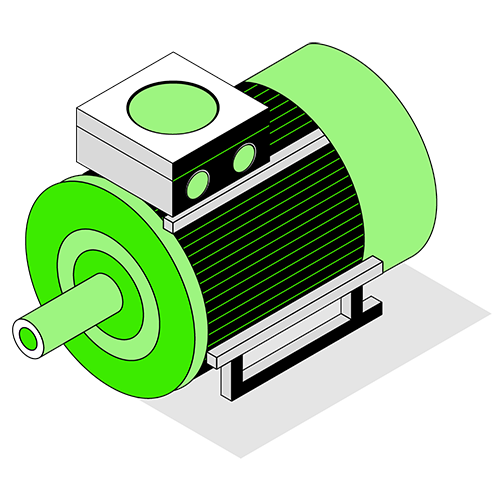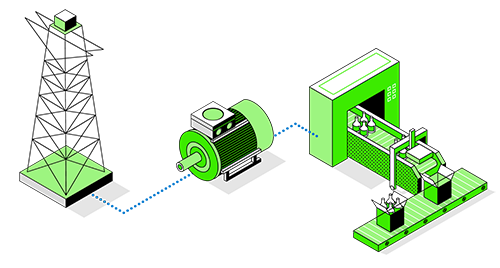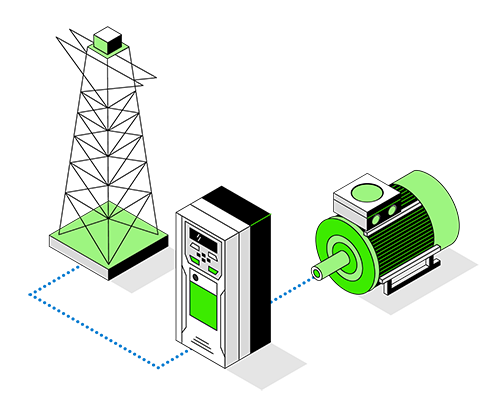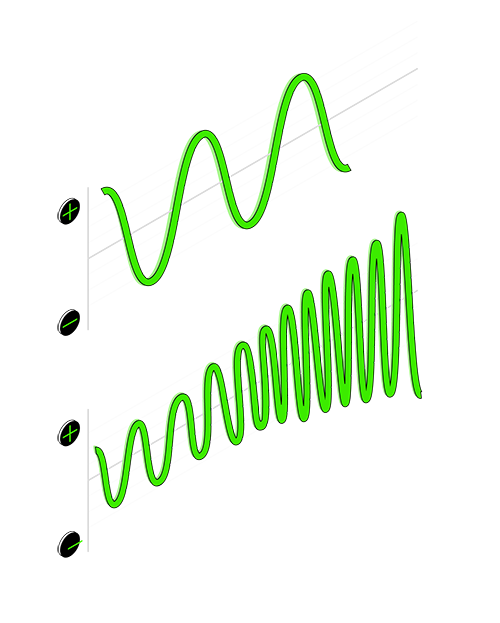If you’re new to drives, you might be wondering what all the fuss is about. Here’s a short introduction...
Firstly, let's talk about electric motors...
Electric motors are everywhere! Almost every mechanical movement the world over can be created by an electric motor.
And how do they work?
By turning electrical energy into mechanical energy, or motion. But when they’re directly connected to the electrical supply, the motor’s speed is fixed, whether the task requires that level of constant power or not. This is pretty inefficient.
So you're wasting energy and money.
And considering these motors are responsible for up to 40% of the world’s electrical power consumption, not only is it bad for business, it’s bad for the planet too.
Drives make sure motors use electricity efficiently.
By positioning a drive between the electrical supply and the motor, power is fed into the drive, and the drive then controls and regulates the power that is fed into the motor. This allows control of speed, direction, acceleration, deceleration, torque and, in some applications, position of the motor shaft.
Inside…
The drive does this by changing a constant frequency, constant voltage supply into a variable frequency, and variable voltage supply. By continually calculating and adjusting the frequency and voltage, the motor receives only the power it needs.
This means…
Lower energy costs, lower maintenance costs, and a smaller carbon footprint.
Our drives
Because one product can never fit all applications, we manufacture many different types of drive. So whatever the industry, function, scale and country, we have a drive that will work for your application. They really are the unsung heroes that move the world!
Browse all drive basics blog posts








